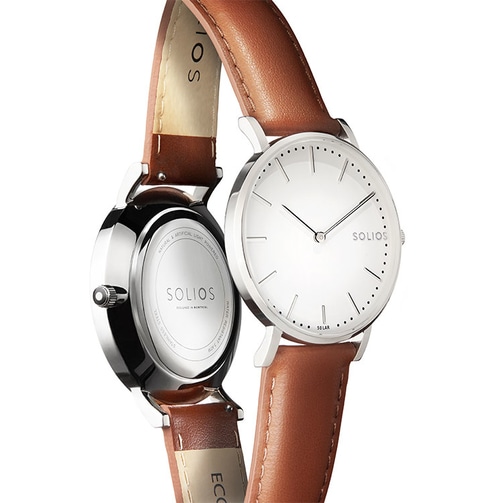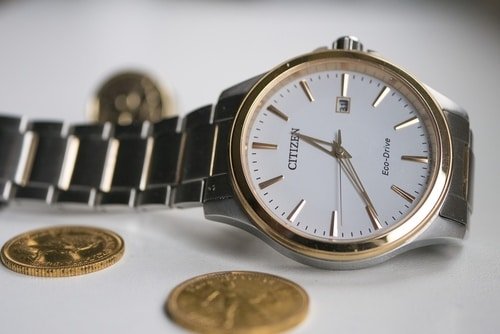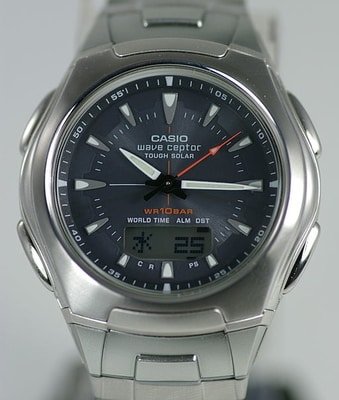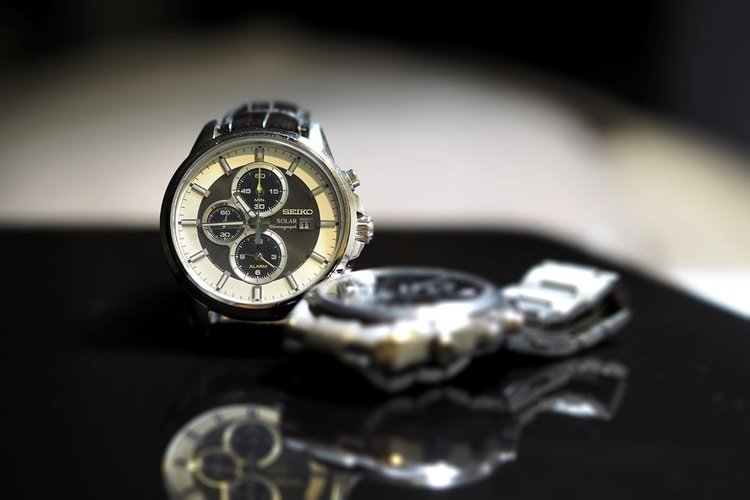
In this day and age where efficiency and sustainability are given much importance, it may be worth considering buying products that feature “green technologies.” One such product is the solar watch. Is a solar-powered watch right for you? Read on to know more about solar watches pros and cons.
What Is a Solar Watch?

Before we discuss the pros and cons of solar watches, we must first define ‘what is a solar watch’. A solar watch is a watch that is powered by a solar cell. Sunlight or artificial light is absorbed by the solar panel behind the crystal. The dial is either above or on the solar panel. To power the watch, the solar panel converts light into electrical energy.
The watch stores energy in a rechargeable cell to power itself when covered (by a long sleeve) or during the night.
In particular, Citizen solar watches use lithium-ion batteries to store enough energy to power the watch for several months without light exposure, by allowing it to enter a hibernation (power-saving) mode. In that mode, the second’s hand stops until the solar watch is re-exposed to light. Not all solar watches have a power-saving mode, yet will still hold a charge for up to six months, as with uncomplicated analog versions made by Citizen.
Early solar watches manufactured in the 1970s had unique designs to accommodate the photovoltaic solar cells required to power them (e.g., Synchronar, Sicura, Nepro). Inexpensive solar watches were first sold during the 1980s and were popular among children, often featuring famous characters such as G.I. Joe or Transformers.
In the 1990s, Citizen started selling solar watches under the Eco-Drive series. Since their introduction, solar watches have greatly improved in terms of efficiency and capacity. Today, solar-powered watches are a major part of the range of watches of many watchmakers, including Citizen, Casio, Seiko, Junghans, and Orient.
However, Seiko and Citizen watches have much of the market share and compete for head to head on their solar technology
Young brand Solios from Canada produces a line of minimalist solar watches with thinner cases and sleeker profiles than earlier generation technology.
In mid-2020, well-known smartwatch manufacturer Garmin launched a new solar line, upgrading some of their bestselling models with solar power and extended battery life.

Solar Watch Pros
Can be charged through any light source
Some people might think that solar watches can only be charged by exposing it to sunlight. That is a misconception. A solar watch can be powered by any light source, whether outdoor or indoor. So aside from the sun, you can also expose a solar watch to incandescent or fluorescent bulbs to recharge the solar cells under the dial.

Easy to charge
You can charge a solar watch easily. Solar-powered watches are designed to convert natural and artificial light into energy. All you have to do is expose the watch to any source of light, and it will start charging. You can say that a solar watch is always charging (unless you store it in total darkness).
Low maintenance
It doesn’t require much effort to keep a solar watch running. Unlike a manual wind (that needs to be wound regularly) or automatic watch (that needs motion), a solar-powered watch only requires light to function. It doesn’t require any special maintenance. As long as it is exposed to light, it will keep track of time.
Long power reserve
Power reserve may vary depending on the watch brand or model. But to give you an idea, a Citizen Eco-Drive solar watch is capable of storing up to 6 months of power reserve. This means it will still run up to six months even if you don’t expose it to light or if you store it in complete darkness during that period.

Eco-friendly
Solar watches lessen the need to change batteries every few years or so. Aside from saving money, you also help save the environment by reducing the use of disposable batteries. Old, discarded batteries contribute to environmental pollution. Choosing a solar-powered watch as your timepiece means there are fewer old batteries that can leach chemicals and pollute landfills.
Long-lasting battery
Unlike regular quartz watches that have batteries that can only last up to 2 years, you don’t have to worry about replacing solar watch batteries for up to 10 years (maybe even longer). That’s considerable savings in the long run.
Solar Watch Cons

Slightly more expensive than quartz watches
Because of the technology behind solar watches, it is understandable why the price is slightly higher than regular quartz watches. But the slightly higher cost is justified since you don’t have to replace batteries for the next 10 years or so.
If you’re looking for a new watch, check out our recommended list of best solar watches here.
You can also check out our lists of best Seiko and best Citizen watches, both of which highlight some of their top solar timepieces.
Conclusion
As you can see from this list of solar watches pros and cons, the advantages of owning a solar-powered far outweigh the disadvantages. Solar watches are reliable, low-maintenance, and environmentally friendly timepieces. The technology behind them is truly extraordinary and is only expected to improve as time goes by.
